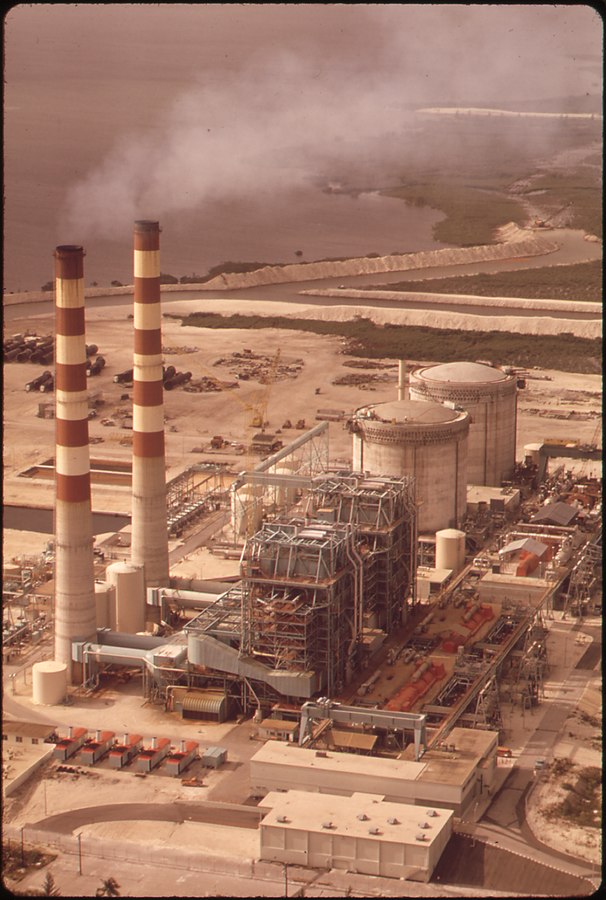Will Florida’s two nuclear plants, Turkey Point and St. Lucie, be able to withstand Hurricane Irma?
Florida governor Rick Scott, the utility Florida Power & Light (FP&L), and the US Nuclear Regulatory Commission (NRC) have all provided assurances that they will. But we are about to witness a giant experiment in the effectiveness of the NRC’s strategy for protecting nuclear plants from natural disasters.
A review of the plans that the two plants have developed to protect against extreme natural disasters leaves plenty of room for concern. These plans were developed in response to new requirements that the NRC imposed in the years following the March 2011 Fukushima nuclear plant disaster in Japan. A prolonged loss of all electrical power—caused by an earthquake and subsequent tsunami that flooded the Fukushima site—resulted in three nuclear reactor meltdowns and a large release of radioactivity to the environment. (Even when reactors are shut down, they normally rely on electrical power to provide cooling water to the fuel in the cores and the spent fuel in storage pools, which remain hot.)
Fukushima made it clear that nuclear plants around the world were not sufficiently protected against natural disasters. Subsequently, the NRC imposed new requirements on US nuclear plants to develop strategies to cope with prolonged electric blackouts.
However, these new requirements were heavily influenced by pressure from a cost-conscious nuclear industry. As a result, they were limited in scope.
Moreover, these requirements are based on numerous assumptions that may not prove valid in the face of massive and powerful storms. In effect, the NRC is betting that no nuclear plant will experience conditions that don’t conform to these assumptions. Soon, the nation will find out whether the NRC wins or loses the next round with Mother Nature: Hurricane Irma.
The Plan for Turkey Point

Turkey Point Nuclear Plant (Source: NARA)
FP&L’s plan for Turkey Point, 25 miles south of Miami, contains many questionable assumptions.
To give just one example, its strategy to keep the two reactors cool if there is a total loss of electrical power (both offsite and on-site back-up power) includes initially drawing water from two water supply tanks (so-called condensate storage tanks), running the water through the reactors’ steam generators, and dumping the steam that is produced by the heat of the nuclear fuel in the reactor cores into the atmosphere (when the plant is operating, the steam is used to generate electricity).
But here’s the rub: These tanks were not designed to withstand objects thrown about by the high winds occurring during tornadoes or hurricanes.
Nevertheless, FP&L assumed—and the NRC accepted—that at least one of the two tanks on site would withstand any hurricane. They argued that this was a reasonable assumption because the two tanks are separated by a few hundred feet and there are structures between them. There seems to be a degree of wishful thinking at work here. If both tanks were damaged, the challenges in keeping the cores cool would be far greater.
Also, to deal with prolonged station blackouts—when both offsite and onsite back-up power is lost—the Turkey Point plan assumes that offsite assistance would be available after five days. The nuclear industry has set up two “National SAFER Response Centers,” one in Memphis, Tennessee and the other in Phoenix, Arizona. Each one contains additional emergency equipment and supplies to supplement those that each reactor owner is required to have on site. The NRC requires that every plant in the country have an agreement with one of the SAFER centers to provide equipment and assistance should it be needed.
But the functioning of this system depends on the ability of the SAFER centers to deliver the equipment in a timely manner, which might not be possible if there were a widespread and prolonged natural disaster.
Turkey Point’s plan requires that deliveries from the Memphis SAFER center be shipped to Miami International Airport and then hauled (if the roads are clear) to the site or to the Homestead Air Reserve Base and taken to the site via helicopter. But it doesn’t take too great a stretch of the imagination, given the potential impact of a massive storm like Irma, to see where this plan could go badly wrong. And looking at the current track of the storm, the Memphis SAFER center itself could well be in its path, causing problems at the shipping end as well as the receiving end.
Even if the Turkey Point plan were effective, it is not clear how much of it has been put into place on the ground yet. At the end of June, the plant reported to the NRC that it needed to make ten modifications to address the risk of storm surges that could exceed the flood level that the plant was originally designed to withstand.
But it isn’t clear how many of those modifications have been completed yet. And the NRC’s first inspection of the post-Fukushima measures at Turkey Point is not even scheduled until March 2018. So at this time all the public has to rely on is an assumption that FP&L has implemented the plan completely and correctly.
With one assumption piled upon another, it is very hard for observers to assess how prepared Turkey Point really is to deal with superstorms. Hopefully, the plant will pass the Irma test, but the NRC will need to reevaluate whether its new requirements can adequately address the potential for more severe storms in the future.
